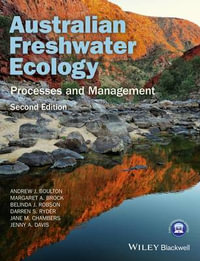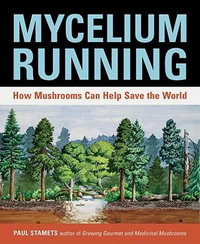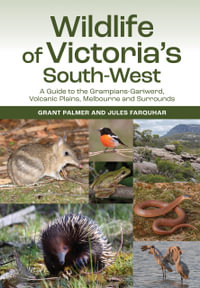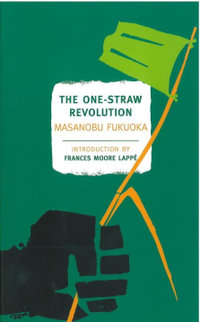| Contributors | p. xi |
| Preface | p. xiii |
| Pathogens in Biosolids | |
| Biosolids: A Historical Perspective and Current Outlook | p. 2 |
| The Nature of Wastewater (Sewage) | p. 3 |
| Wastewater (Sewage) Treatment | p. 4 |
| Class A Versus Class B Biosolids | p. 4 |
| Removal of Pathogens by Sewage Treatment Processes | p. 6 |
| Pathogens of Concern in Class B Biosolids | p. 8 |
| Bacteria | p. 8 |
| Enteric Viruses | p. 15 |
| Protozoan Pathogens | p. 18 |
| Helminths | p. 19 |
| Other Biological Concerns in Biosolids | p. 21 |
| Pathogen Transport and Survival in Soil, Water, and Air | p. 25 |
| Exposure via Soil and Groundwater | p. 25 |
| Exposure via Air | p. 27 |
| Risk-Based Evaluation of the Potential Hazards Posed by Pathogens in Biosolids | p. 29 |
| On-Site Exposure from Land-Applied Biosolids | p. 29 |
| On-Site Exposure to Workers via Bioaerosols Generated During Land Application of Biosolids | p. 30 |
| Off-Site Exposure of Bioaerosols to Residents in Communities Close to Land Application Sites | p. 31 |
| Public Perceptions of Land Application of Biosolids with Respect to Pathogens | p. 32 |
| Future Research Needs | p. 33 |
| References | p. 34 |
| Advances in Crop Water Management Using Capacitive Water Sensors | |
| Introduction | p. 44 |
| Capacitance Soil Water Content Measuring Systems | p. 45 |
| Principle of Operation | p. 45 |
| Equipment Design | p. 47 |
| Installation | p. 49 |
| Data Logging and Displaying | p. 51 |
| Calibration | p. 53 |
| Application of Capacitance as Water Management Devices: Irrigation Scheduling for Different Crops | p. 57 |
| Determination of Soil Water Physical Properties | p. 62 |
| Field Soil Water Storage | p. 62 |
| Field Unsaturated Hydraulic Conductivity | p. 64 |
| Spatial and Temporal Distributions of Soil Physical Properties | p. 66 |
| Use of MCP to Calculate Different Field Water Cycle Components | p. 66 |
| Plant Water Use | p. 66 |
| Drainage Below the Root Zone | p. 68 |
| Effective Rainfall | p. 68 |
| Effect of Fluctuation of Soil Temperature and Soil Salinity on the Performance of MCP | p. 70 |
| Conclusions | p. 72 |
| Acknowledgments | p. 72 |
| References | p. 73 |
| Synchrotron Radiation Infrared Spectromicroscopy: A Noninvasive Chemical Probe for Monitoring Biogeochemical Processes | |
| Introduction | p. 80 |
| SR-FTIR Spectromicroscopy | p. 83 |
| Background | p. 83 |
| Synchrotron IR Light Sources | p. 87 |
| Synchrotron IR Spectromicroscopy of Biogeochemical Systems | p. 90 |
| Biogeochemical Processes Measured by SR-FTIR Spectromicroscopy | p. 95 |
| Instrumentation | p. 95 |
| Spectral Analysis | p. 97 |
| Application Examples | p. 98 |
| Future Possibilities and Requirements | p. 110 |
| Acknowledgments | p. 111 |
| References | p. 111 |
| Development and Testing of "On-Farm" Seed Priming | |
| Introduction | p. 130 |
| The Problem | p. 131 |
| Inadequate Crop Stands | p. 131 |
| Factors Affecting Crop Establishment | p. 132 |
| Simple Ways to Improve Crop Establishment | p. 134 |
| Seed Quality | p. 134 |
| Timely Sowing | p. 134 |
| Depth of Sowing | p. 135 |
| Dry Planting | p. 137 |
| Transplanting Seedlings | p. 137 |
| Seed Priming | p. 138 |
| "On-Farm" Seed Priming | p. 139 |
| In Vitro Investigations of Rate and Extent of Germination | p. 141 |
| In Vitro Emergence and Early Seedling Growth | p. 144 |
| Research Station Studies | p. 150 |
| On-Farm Studies | p. 155 |
| Added Value: Improved Crop Nutrition | p. 162 |
| Added Value: Increased Pest and Disease Resistance | p. 166 |
| Conclusions | p. 167 |
| References | p. 169 |
| Thermodynamic Modeling of Metal Adsorption onto Bacterial Cell Walls: Current Challenges | |
| Introduction | p. 180 |
| Mechanistic Studies of Cell Wall Adsorption | p. 181 |
| Partitioning Relationships Versus Surface Complexation Modeling | p. 181 |
| Constraints on Bacterial Cell Wall-Protonation Reactions | p. 183 |
| Constraints on Mechanisms of Metal Adsorption onto Bacteria | p. 188 |
| Challenges in Applying Surface Complexation Models to Real Systems | p. 192 |
| Concluding Remarks | p. 195 |
| Acknowledgments | p. 197 |
| References | p. 198 |
| Alfalfa Winter Hardiness: A Research Retrospective and Integrated Perspective | |
| Introduction | p. 204 |
| Morphological and Developmental Bases of Winter Survival | p. 205 |
| Crown Depth, Root Morphology, and Winter Survival | p. 205 |
| Fall Dormancy and the Acquisition of Freezing Tolerance | p. 207 |
| Impact of Environmental Factors on Alfalfa-Freezing Tolerance | p. 211 |
| Molecular Bases of Winter Survival: Current Understanding and Emerging Concepts | p. 217 |
| Tolerance to Freeze-Induced Desiccation and Cold Hardiness of Alfalfa | p. 217 |
| Cold-Induced Accumulation of Cryoprotective Sugars | p. 218 |
| Amino Acids | p. 222 |
| Modification of Gene Expression at Low Temperature | p. 224 |
| The Genetic Bases of Cold Adaptation in Alfalfa | p. 234 |
| Genetic Variability for Freezing Tolerance | p. 234 |
| Conventional Genetic Selection for Improved Winter Hardiness and Freezing Tolerance | p. 236 |
| Marker-Assisted Selection | p. 242 |
| Conceptual Approach to the Genetic Control of Freezing Tolerance in Alfalfa | p. 248 |
| References | p. 250 |
| Projecting Yield and Utilization Potential of Switchgrass as an Energy Crop | |
| Introduction | p. 268 |
| Projecting Yield Gains in Switchgrass Relative to Maize | p. 270 |
| Breeding History of Maize | p. 270 |
| Breeding Gains with Perennial Grasses Including Switchgrass | p. 272 |
| Potential Yields of Maize and Switchgrass | p. 274 |
| Whole Plant Production in Maize and Switchgrass | p. 277 |
| Projecting Switchgrass Performance in Time and Space with the ALMANAC Model | p. 279 |
| Physiological and Ecological Traits of Switchgrass | p. 279 |
| Parametrization of the ALMANAC Model | p. 280 |
| Simulated Yields from ALMANAC Versus Actual Yields Within the Region | p. 281 |
| Assessing Economic Impacts of Widespread Deployment of Switchgrass in a National Bioenergy Program | p. 285 |
| Conclusions | p. 292 |
| Acknowledgments | p. 293 |
| References | p. 294 |
| Index | p. 299 |
| Table of Contents provided by Ingram. All Rights Reserved. |
























